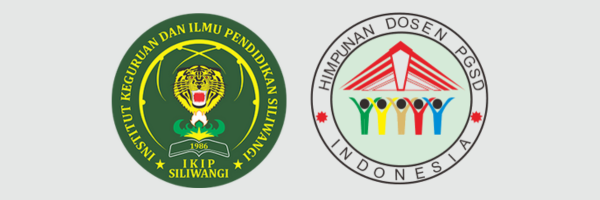DEVELOPMENT OF INQUIRY-BASED STUDENT WORKSHEETS (LKPD) ON MATHEMATICS SUBJECT IN THE MATERIAL OF CUBES AND BLOCKS TO IMPROVE MATHEMATICAL UNDERSTANDING OF SLOW LEANERS
DOI:
https://doi.org/10.22460/pej.v4i1.1468Abstrak
This research is background by most of the slow learner children who are slow in understanding the basic concepts of cubes and blocks, slow learners children still have difficulty in verbally defining the concept of cubes and blocks. This research aims to develop the Student Inquiry Worksheet (LKPD) based on inquiry in the mathematics subject matter of cubes and beams in slow learners and to find out the improvement of the ability of mathematical understanding of slow learners of children on cube and blocks material after applying inquiry-based learning models. The research was conducted at SDN Margahayu 08 Bandung Regency, using the Research and Development model. LKPD was developed with the stages of identifying problems, collecting data, designing LKPD, validating, revising designs, and conducting LKPD trials. The results of the analysis using SPSS software version 24.0 For windows with several stages of testing, namely the prerequisite test (normality and homogeneity test), T test (paired sample t test). by first analyzing the test result data (pre-test and post-test) conducted individually on the child slow learner about the ability to understand mathematical concepts of cube and beam material. the results showed that LKPD was appropriate to be used in learning slow learner cubes and blocks with inquiry-based material and there was an increase in the ability to understand mathematical concepts of slow learner children by using LKPD and by applying inquiry-based learning models.Referensi
Ahmad, Suedi (2011). Media Pembelajaran, Alat Peraga, dan Alat Bantu Belajar. [Online]. Tersedia: http://suediguru.blogspot.com. [26 Maret 2016]
Lestari, Karunia Eka, dan Yudhanegara, Mokhammad Ridwan. (2017). Penelitian Pendidikan Matematika. Bandung: PT. Refika Aditama.
Mangunsong, Frieda (2009). Psikologi dan Pendidikan Anak Berkebutuhan Khusus. jilid Ke satu. Jakarta: LPSP 3 Fakultas Psikologi UI.
Prastowo, Andi, (2015). Panduan Kreatif Membuat Bahan Ajar Inovatif. Yogyakarta. Diva Press.
Pujiati (2004). Penggunaan Alat Peraga dalam Pembelajaran Matematika SMP. [Online]. Tersedia: http//p4tkmatematika.org/downloads/smp/AlatPeragaMatematika.pdf.[24 Maret 2016]
Rahadi, Aristo (2003). Media Pembelajaran. Departemen Nasional. Direktorat Jenderal Pendidikan Dasar dan Menengah Direktorat Tenaga Kependidikan.
Ruseffendi, E. T. (1992). Pendidikan Matematika 3. Jakarta: Depdikbud.
Sanjaya, Wina. (2008). Strategi Pembelajaran Berorientasi Standar Proses Pendidikan. Jakarta: Kencana Prenada Media Group.
Sugiyono. (2008). Metode Penelitian Kombinasi (Mixed Methods). Bandung: Alfabeta.
Sugiyono. (2015). Metode Penelitian dan pengembangan research&development). Bandung: Alfabeta.
Sukmadinata, N.S. 2012. Pendekatan Penelitian Pendidikan. Bandung: PT.Remaja Rosdakarya.
Susanto, Ahmad. (2013). Teori Belajar dan Pembelajaran di Sekolah Dasar. Jakarta: Kencana Prenada Media Group.
Trianto, (2017), Mendesain Model Pembelajaran Inovatif Progresif dan Kontekstual ,Gramedia Digital
Wena, Made. (2010). Strategi Pembelajaran Inovatif Kontemporer. Jakarta: PT. Bumi Aksara.












